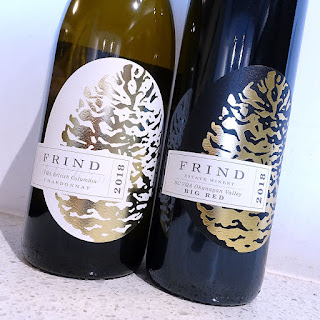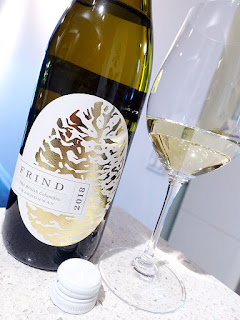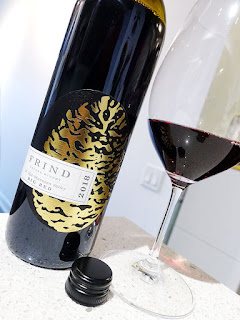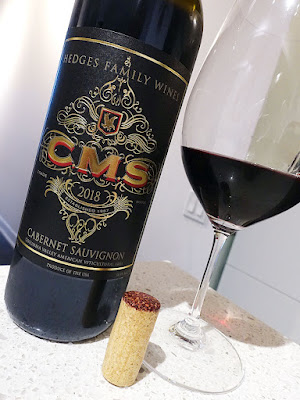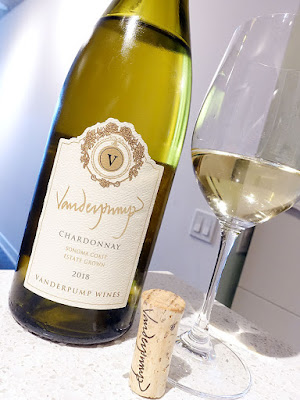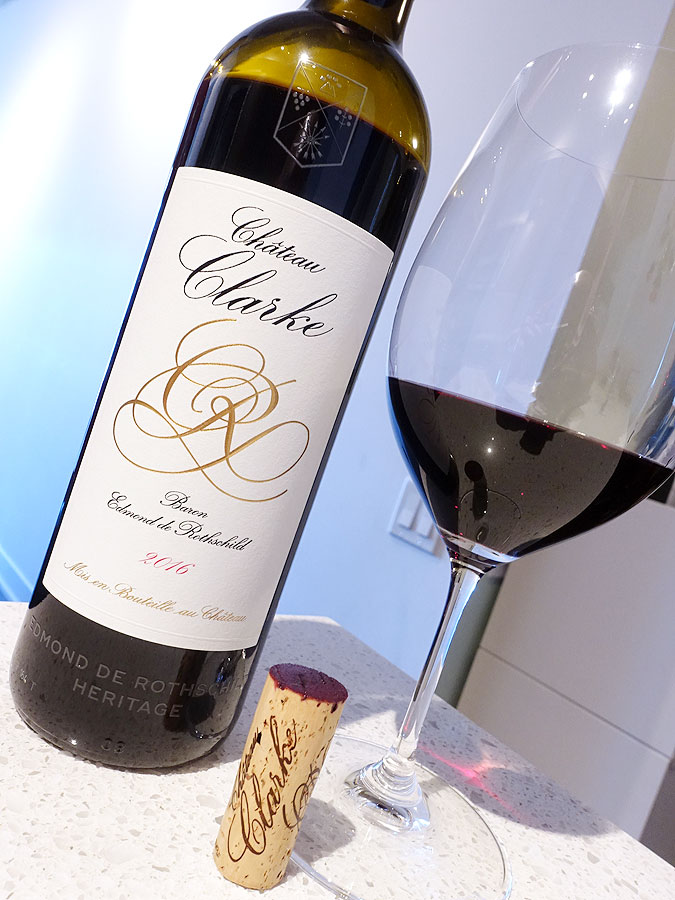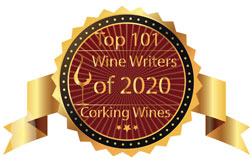Continuing my trek towards that is coming up on , wine reviews are a pair of delicious, organic, and vegan-friendly Argentine Malbec wines that recently came to LCBO VINTAGES as new arrivals.
Both of these wines are produced by Domaine Bousquet, a family with 4 generations of winemaking tradition originating in the city of Carcassonne, in the South of France. Third-generation winemaker Jean Bousquet vacationed in Argentina in 1990 and fell in love with the country. It was love at first sight when he visited the scenic and remote terrain of the Gualtallary Valley high in the Tupungato district of the Uco Valley in Argentina's Mendoza region. At the time, it was virgin territory as the locals dismissed the area as too cold for grape growing due to altitudes ranging up to 1,600 metres (5,249 feet). However, Bousquet reckoned that he'd found the perfect blend between his French homeland and the New World that was sunny with high natural acidity, and the potential for relatively fruit-forward wines. Today, Gualtallary occupies the highest extremes of Mendoza's viticultural limits and is the source for some of province's finest wines.
Bousquet's daughter, Anne Bousquet, and her husband Labid Al Ameri, were both working in fields outside of wine, but were soon drawn to the cause and offered to put their shared philosophy of sustainability into effect. In 2005, Al Ameri joined his father-in-law full-time to help with the construction of the winery, and Anne joined the family business in 2008. In 2011, the couple assumed full ownership of Domaine Bousquet.
Today, the estate consists of 240 hectares in Gualtallary at an altitude of 1,200 metres (4,000 feet) and due to its location the vineyards benefit from a cool climate and constant fresh air. With very little rainfall, the vineyards are irrigated using a drip system that harnesses pure (and special) Andean mountain snowmelt run-off that creates lower pH in the grapes, resulting in higher acidity. The climate is also desert-like with high 15° C (59° F) day/night temperature differential. The soil surface has low concentrations of organic material, which produces favourable stress in the vines, while the sandy soils offer great drainage and help create elegant wines. Farmed organically since 2001, Domaine Bousquet is Argentina's leading exporter of organic wines, exporting to more than 50 countries. Let's see how these two wines that are brand new to the LCBO in Ontario are tasting tonight...
From the Gran Bousquet line that stars the best grapes from their "home" vineyard that was originally planted by the Bousquet family in the late 1990's. Blend of 85% Malbec, 5% Cabernet Sauvignon, 5% Merlot, and 5% Syrah that was organically grown on sandy soils with low fertility, the grapes were manually harvested, selected, and sorted. It was fermented using selected yeasts and aged for 10 months in French oak. The medium-high intensity nose is rich and dark with fine wood spice aromas layered over blackberry, currant, cassis, violet, and vanilla. Full-bodied, structured, and dry on the palate with lightly tangy blackberry, herb, black currant, cassis, wood spice flavours with touches of pepper. Fresh, juicy acids whet the palate, while the youthful tannins have some grip. Savoury wood and spice notes linger on the structured finish, with very good length. On the bigger side of Malbec and a recommended buy. Arrived in LCBO VINTAGES on . Score: 90+ pts
VIRGEN NATURAL MALBEC 2019 - Vegan, Sustainable, Tupungato, Valle de Uco, Mendoza, Argentina (#21987) (XD) - $17.95
From Bousquet's Virgen line that has no sulfites added, Virgen wines offer the purest expression of terroir from grapes grown on a mix of sandy and gravel soils. This organic 100% Malbec is crafted from estate fruit grown at a cool 1,200 metres (4,000 feet) elevation in Tupungato, Alto Gualtallary, in the foothills of the Andes. Screw cap. This unoaked Malbec has a fresh and fragrant nose that is ripe and fruit-forward with black-blue-purple fruit, plum, grapey, and white pepper spice aromas, plus whiffs of stony mineral. On the medium-full bodied palate it shows impressive fruit concentration with more fruity black-blue-purple fruit, and grapey flavours joined by touches of dried herbs and spice adding a pleasant savoury component. Mild tannins have a refined, slightly dusty texture. Acids are juicy. Tapers to a minerally, finish, with very good length. Recommended buy! Arrived in LCBO VINTAGES on . Score: 89 pts
Other lovely wines by Domaine Bousquet are available in limited quantities at the LCBO, while the rest of their portfolio can be ordered through their Agent - B. Cojocaru Agencies Inc.
Both of these wines are produced by Domaine Bousquet, a family with 4 generations of winemaking tradition originating in the city of Carcassonne, in the South of France. Third-generation winemaker Jean Bousquet vacationed in Argentina in 1990 and fell in love with the country. It was love at first sight when he visited the scenic and remote terrain of the Gualtallary Valley high in the Tupungato district of the Uco Valley in Argentina's Mendoza region. At the time, it was virgin territory as the locals dismissed the area as too cold for grape growing due to altitudes ranging up to 1,600 metres (5,249 feet). However, Bousquet reckoned that he'd found the perfect blend between his French homeland and the New World that was sunny with high natural acidity, and the potential for relatively fruit-forward wines. Today, Gualtallary occupies the highest extremes of Mendoza's viticultural limits and is the source for some of province's finest wines.
Bousquet's daughter, Anne Bousquet, and her husband Labid Al Ameri, were both working in fields outside of wine, but were soon drawn to the cause and offered to put their shared philosophy of sustainability into effect. In 2005, Al Ameri joined his father-in-law full-time to help with the construction of the winery, and Anne joined the family business in 2008. In 2011, the couple assumed full ownership of Domaine Bousquet.
Today, the estate consists of 240 hectares in Gualtallary at an altitude of 1,200 metres (4,000 feet) and due to its location the vineyards benefit from a cool climate and constant fresh air. With very little rainfall, the vineyards are irrigated using a drip system that harnesses pure (and special) Andean mountain snowmelt run-off that creates lower pH in the grapes, resulting in higher acidity. The climate is also desert-like with high 15° C (59° F) day/night temperature differential. The soil surface has low concentrations of organic material, which produces favourable stress in the vines, while the sandy soils offer great drainage and help create elegant wines. Farmed organically since 2001, Domaine Bousquet is Argentina's leading exporter of organic wines, exporting to more than 50 countries. Let's see how these two wines that are brand new to the LCBO in Ontario are tasting tonight...
Tasting Note:
DOMAINE BOUSQUET GRAN MALBEC 2018 - Vegan, Gualtallary, Tupungato, Valle de Uco, Mendoza, Argentina (#21983) (XD) - $24.95From the Gran Bousquet line that stars the best grapes from their "home" vineyard that was originally planted by the Bousquet family in the late 1990's. Blend of 85% Malbec, 5% Cabernet Sauvignon, 5% Merlot, and 5% Syrah that was organically grown on sandy soils with low fertility, the grapes were manually harvested, selected, and sorted. It was fermented using selected yeasts and aged for 10 months in French oak. The medium-high intensity nose is rich and dark with fine wood spice aromas layered over blackberry, currant, cassis, violet, and vanilla. Full-bodied, structured, and dry on the palate with lightly tangy blackberry, herb, black currant, cassis, wood spice flavours with touches of pepper. Fresh, juicy acids whet the palate, while the youthful tannins have some grip. Savoury wood and spice notes linger on the structured finish, with very good length. On the bigger side of Malbec and a recommended buy. Arrived in LCBO VINTAGES on . Score: 90+ pts
VIRGEN NATURAL MALBEC 2019 - Vegan, Sustainable, Tupungato, Valle de Uco, Mendoza, Argentina (#21987) (XD) - $17.95
From Bousquet's Virgen line that has no sulfites added, Virgen wines offer the purest expression of terroir from grapes grown on a mix of sandy and gravel soils. This organic 100% Malbec is crafted from estate fruit grown at a cool 1,200 metres (4,000 feet) elevation in Tupungato, Alto Gualtallary, in the foothills of the Andes. Screw cap. This unoaked Malbec has a fresh and fragrant nose that is ripe and fruit-forward with black-blue-purple fruit, plum, grapey, and white pepper spice aromas, plus whiffs of stony mineral. On the medium-full bodied palate it shows impressive fruit concentration with more fruity black-blue-purple fruit, and grapey flavours joined by touches of dried herbs and spice adding a pleasant savoury component. Mild tannins have a refined, slightly dusty texture. Acids are juicy. Tapers to a minerally, finish, with very good length. Recommended buy! Arrived in LCBO VINTAGES on . Score: 89 pts
Other lovely wines by Domaine Bousquet are available in limited quantities at the LCBO, while the rest of their portfolio can be ordered through their Agent - B. Cojocaru Agencies Inc.











